44+ Samples Lesson Schedule
-
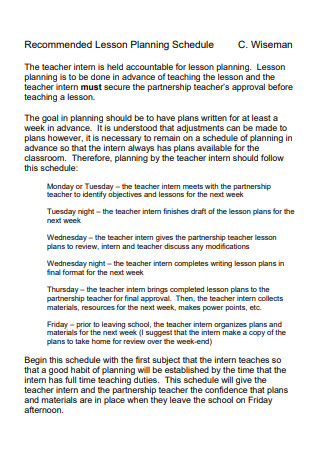
Lesson Planning Schedule
download now -
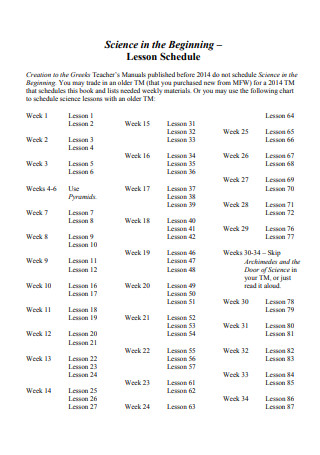
Lesson Schedule Template
download now -
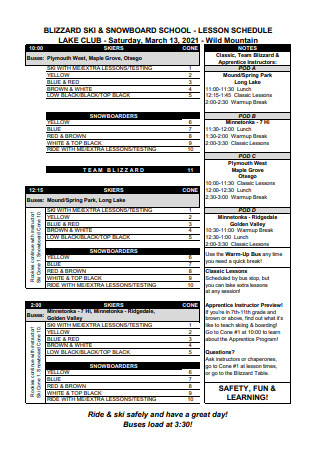
School Lesson Schedule
download now -
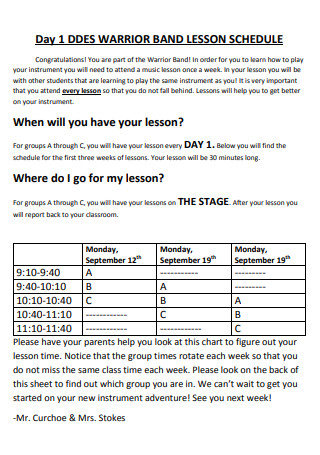
Warrior Band Lesson Schedule
download now -
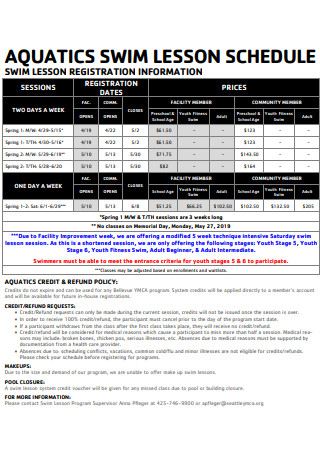
Swim Lesson Schedule
download now -
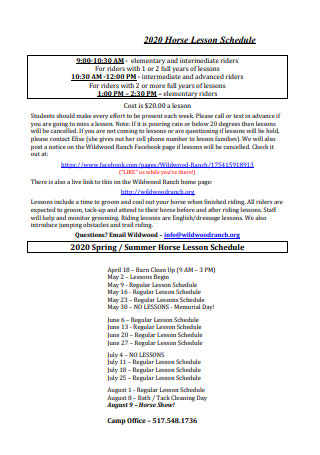
Horse Lesson Schedule
download now -
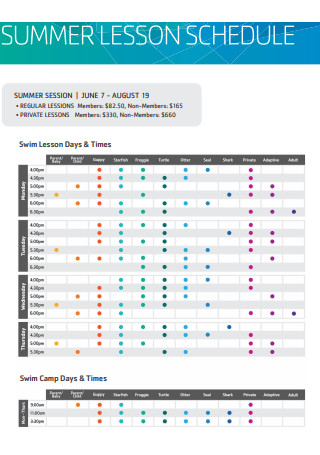
Summer Lesson Schedule
download now -
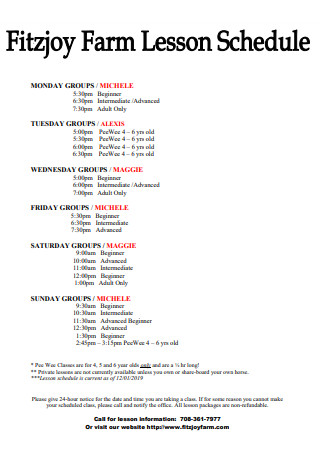
Farm Lesson Schedule
download now -
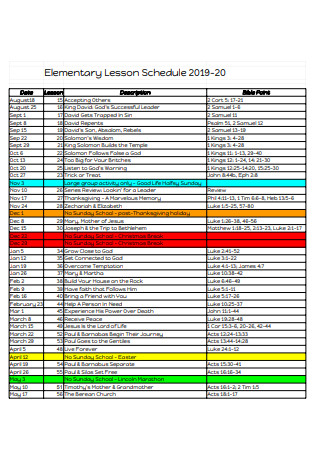
Elementary Lesson Schedule
download now -
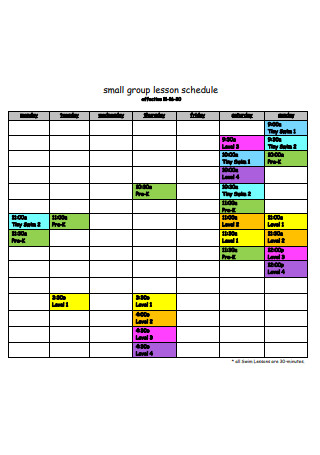
Small Group Lesson Schedule
download now -
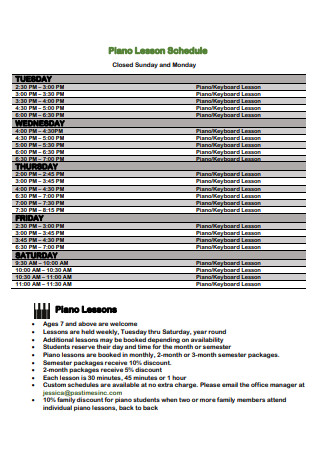
Piano Lesson Schedule
download now -
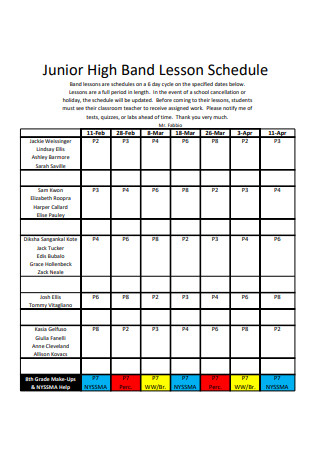
Junior High Band Lesson Schedule
download now -

Sample Lesson Schedule
download now -

Swim Lesson Master Schedule
download now -
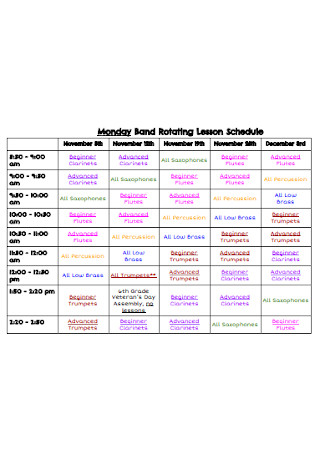
Rotating Lesson Schedule
download now -
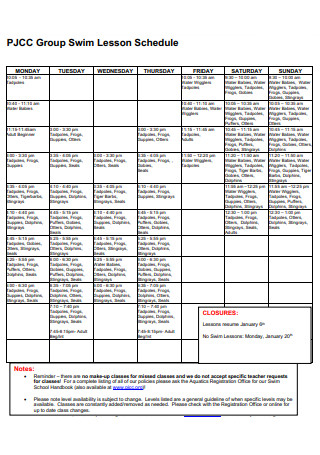
Group Swim Lesson Schedule
download now -
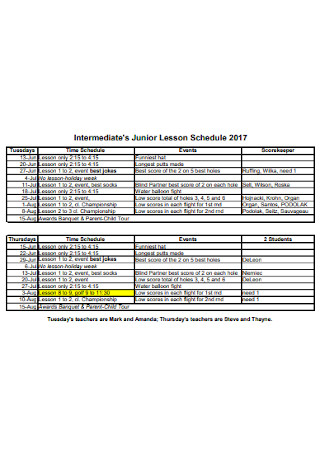
Intermediate Junior Lesson Schedule
download now -

Individual Lesson Schedule
download now -
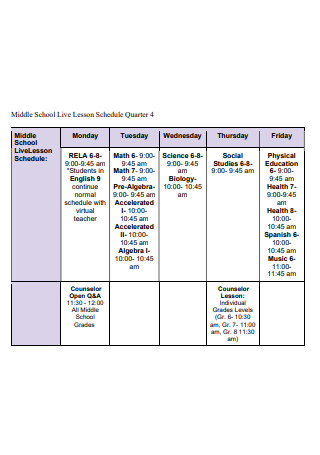
Middle School Lesson Schedule
download now -
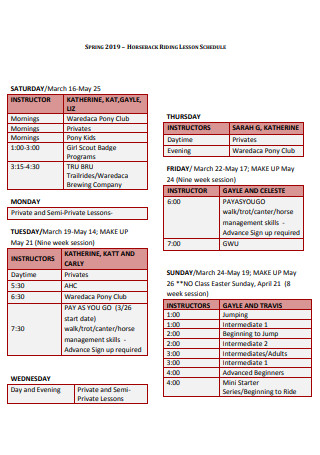
Horseback Riding Lesson Schedule
download now -
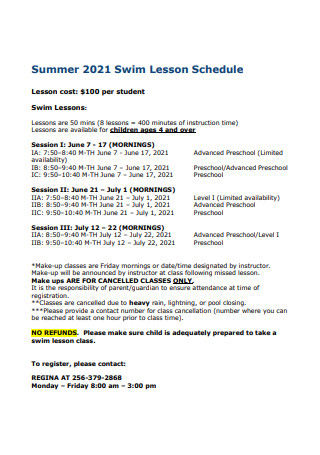
Summer Swim Lesson Schedule
download now -
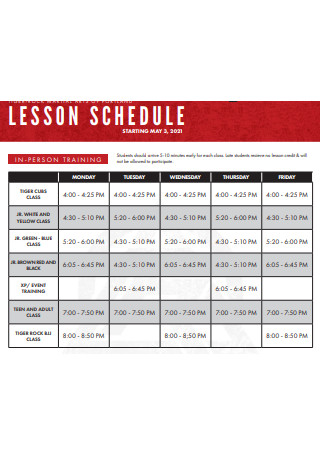
Printable Lesson Schedule
download now -
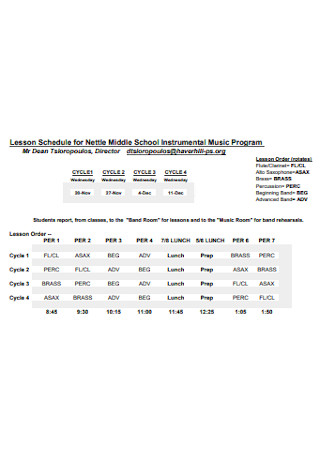
Lesson Schedule for Middle School Instrumental Music Program
download now -
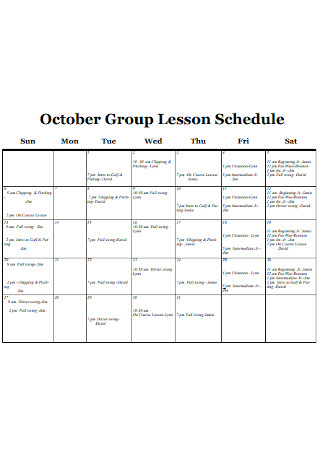
Group Lesson Schedule
download now -

Lesson Schedule Example
download now -
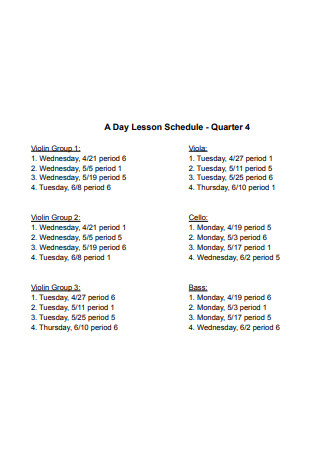
Day Lesson Schedule
download now -
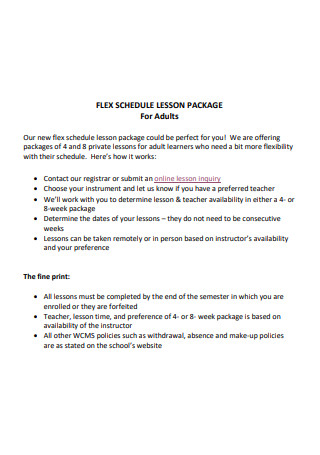
Lesson Schedule Package
download now -
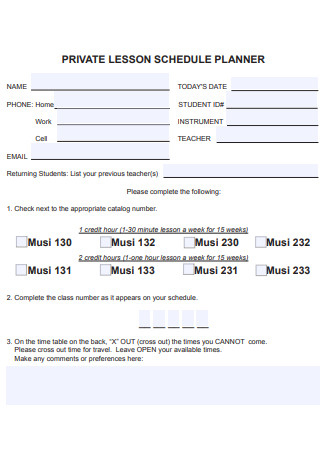
Private Lesson Schedule Planner
download now -
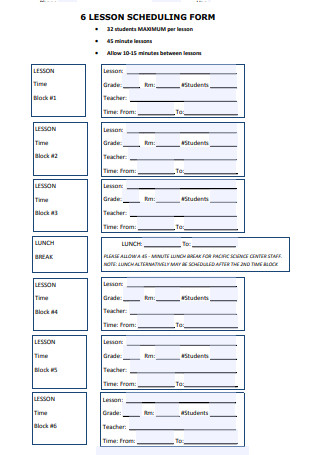
Lesson Scheduling Form
download now -
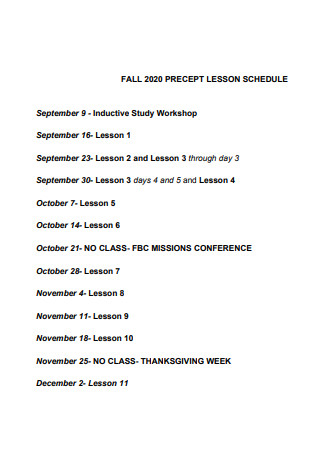
Formal Lesson Schedule
download now -

Basic Lesson Schedule
download now -
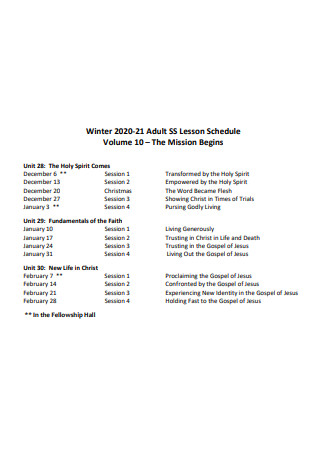
Adult Lesson Schedule
download now -

Grade Lesson Schedule
download now -
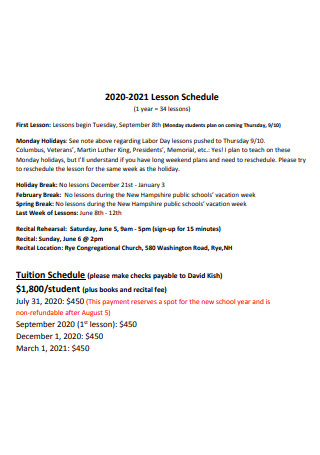
Standard Lesson Schedule
download now -
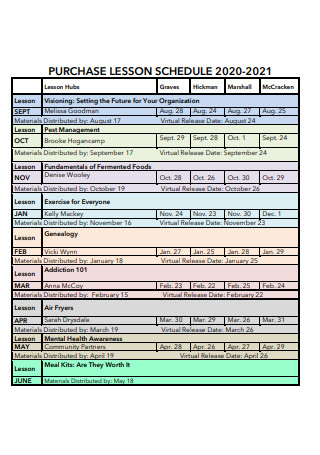
Purchase Lesson Schedule
download now -
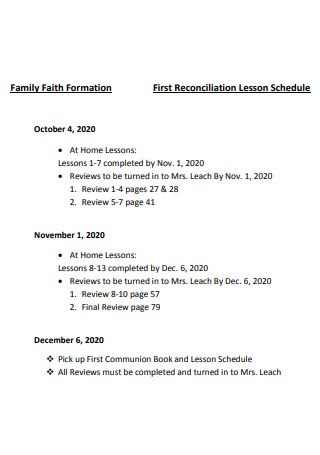
First Reconciliation Lesson Schedule
download now -
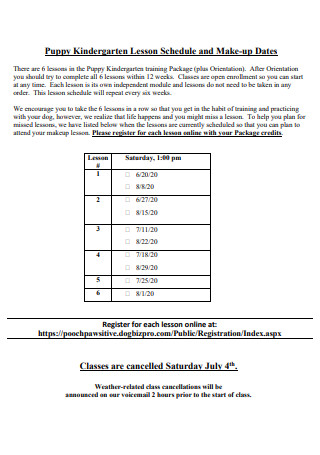
Kindergarten Lesson Schedule
download now -
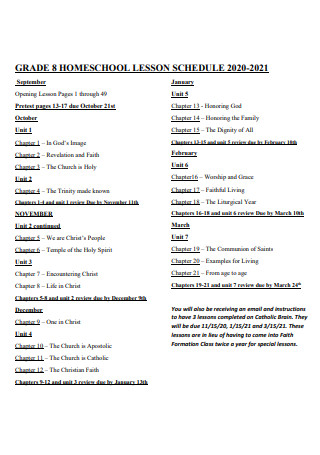
Home School Lesson Schedule
download now -

Christ Lesson Schedule
download now -
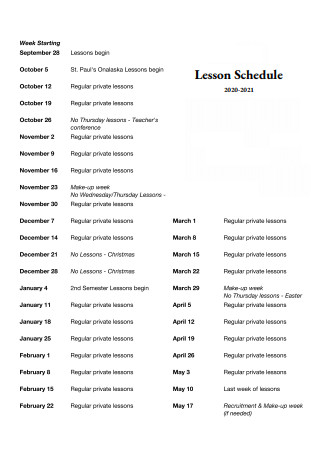
Lesson Schedule in PDF
download now -
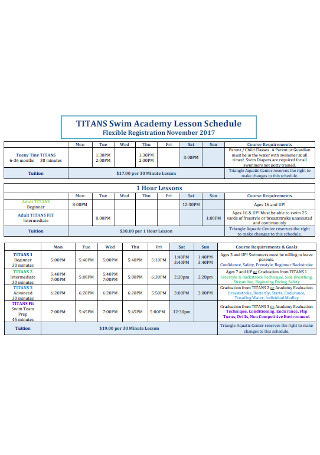
Swim Academy Lesson Schedule
download now -
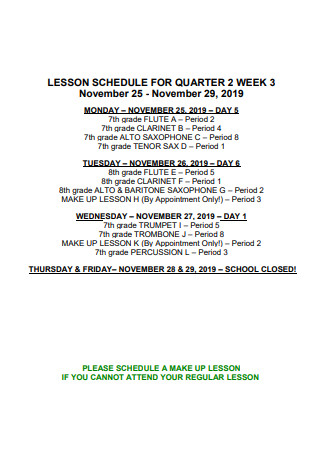
Lesson Schedule For Quarter Week
download now -
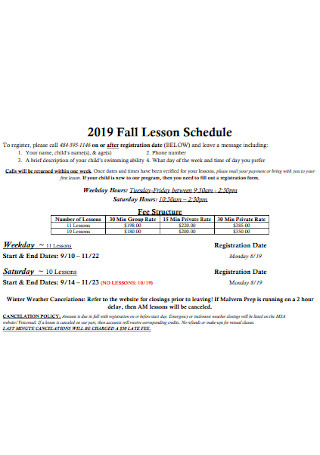
Simple Lesson Schedule
download now -
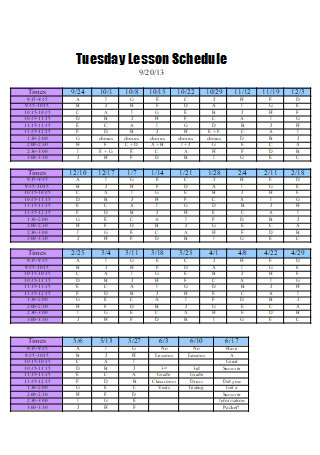
Tuesday Lesson Schedule
download now -
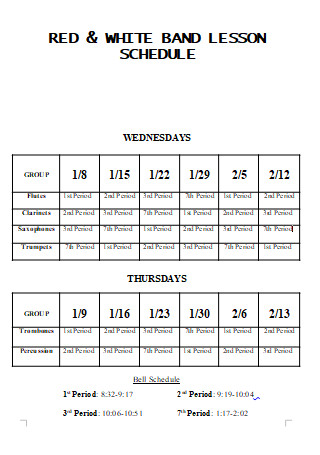
Lesson Schedule in DOC
download now
FREE S Lesson Schedule s to Download
44+ Samples Lesson Schedule
What Is a Lesson Schedule?
Why Is a Lesson Schedule Important?
Lesson Schedules for the Academia
What Makes a Good Lesson Schedule?
Lesson Plan: What’s it got to do with a Lesson Schedule
FAQs
What are the 5 Parts of a Lesson Plan?
How Can I Make my Own Schedule?
How do I Write a Week Lesson Plan?
If you are either of the four or if you atleast relate in some way to the desire to be organized, then you have come to the right place as we have prepared over 40 Lesson Schedule Planners that you can freely edit as you deem fit to your current situation, take ownership of and adopt in your daily routines.
What Is a Lesson Schedule?
In essence, a Lesson Schedule serves as your guide of what needs to be done, when it needs to be done, and why it needs to be done especially within the time frame that you have allotted although this can be an optional inclusion just to sort of reminding you why you’re scheduling the lessons in the first place. In general, lesson schedule planners include a timetable with assigned lessons.
A lesson schedule planner is an essential tool that teachers and instructors utilize the most in arranging their students’ classes throughout the day, week, month and for the entire semester. However, its usage extends outside academic teaching professions for it also could be utilized by anyone who takes part-time jobs as tutors, teaches a sport, or even by those with church devotions. Basically, for as long as you are someone who wants to impart knowledge on another person or a group of people, a lesson schedule may be something you want to have at your disposal for you to keep track of what needs to be taught and how far you have tackled the prospectus. Although, even the learners themselves could own planners of their own to keep up with the lessons that they are at the receiving end of.
Why Is a Lesson Schedule Important?
Besides the obvious reason that a lesson schedule planner outlines which lessons will be taught throughout the week and for one to own an accessible document that allows them to stay on the same page as their teachers with an additional option to get a head start on the lessons as they wish, a lesson schedule for the learners also helps them refocus their priorities as it should serve as a reminder that there are lessons they need to spend their time on especially when they incorporate it to their existing schedules. Most importantly, a student owning a lesson schedule also teaches them the value of time that in turn, inspires them to foster and develop valuable life skills, especially time management skills, and someone skilled in managing their time deal a lot less from failure to committing and accomplishing tasks before deadlines and most importantly, reduce procrastinations and an inclination to incorporating it in their work ethics because they have convinced themselves work gets done when cramming is involved.
Lesson Schedules for the Academia
For those in the field of teaching, lesson schedules are so much more than just a document that serves as weekly schedules outlining lessons after lessons; however, they do provide just as valuable life lessons and avenues of self-improvement. A lesson schedule for a teacher is a product of time and effort spent in strategizing a cohesive lesson plan that they understand to best impart the necessary knowledge in accordance with the prospectus. It is not just merely picking random topics for discussion but curating it thoroughly with intent to not only disseminate necessary information but teaching it in a manner that would be best appreciated by the students, they are motivated to consume it and are encouraged to actively involve themselves during class discussions.
With a polished lesson schedule, teachers can be reminded of which topics must be prioritized by the learning environment. It also serves as a reminder to the instructors that the finalized schedule is what they poured hours of thought and work into making because they believe it’s how the course as a whole would be best understood. Certainty breeds confidence and confidence is contagious because it does not know how to hide. And a confident educator wants to do their best to deliver and one way to do so is to constantly improve teaching strategies especially when they think it calls for changes after gauging the students’ responses. With a competent teacher that knows and is prepared to make the necessary changes, it is highly likely life-long learners would be cultivated. Maybe it’s an exaggeration to assume a simple document could create such thunderous ripples but don’t we all want to assume the best things?
To an extent, you could say that the polished lesson schedules made to best cater to the students’ learning capacities symbolize the dedication teachers have in performing their roles as society’s educators.
What Makes a Good Lesson Schedule?
In creating a lesson schedule one would have gone through a lesson plan. A lesson schedule is basically just a synthesized version of a lesson plan as the latter is more extensive in the sense that it covers the intricate details and a step-by-step guide in accomplishing the laid out goals so we deem it best to discuss as well a lesson plan as you can’t do away with the other. Remember, it follows that good lesson planning produces an effective lesson schedule.
Lesson Plan: What’s it got to do with a Lesson Schedule
To put it briefly, the lesson plan brings forth the lesson schedule. It is lengthy and detailed and all the more making it a necessary endeavor that should be treated seriously and with sincere intent to deliver quality education to the learners. According to Singapore Management University, a successful lesson plan includes three salient features:1) Learning Objectives, 2) Learning Activities, and 3) Assessment to Check for Student Understanding.
FAQs
What are the 5 Parts of a Lesson Plan?
According to a blog written by Bri Stauffer for Applied Educational Systems, a successful lesson plan is characterized for having the following 6 parts:
- Lesson Objectives
- Related Requirements
- Lesson Materials
- Lesson Procedure
- Assessment Method
- Lesson Reflection
How Can I Make my Own Schedule?
Creating your own schedule should be easy since it’s something you should know very well. While there could be various ways, it’s always best to make a schedule that best fits your daily routines. You can start off by noting what you usually do first when you wake up and what you do throughout the day that are repetitive and you have made a habit out of that not doing them makes your day incomplete. If you’re more aware of these activities, maintaining them will be easy especially if its an ideal one. You can check out this article on Hourly Schedules for more insights about creating your own schedule if you plan to go by the hour.
How do I Write a Week Lesson Plan?
There should be 5 school days in a week which gives you ample time to map out one lesson you think can be finished discussing by the end of the week. As mentioned in the section of what constitutes a lesson plan, a week lesson plan should also include the three features. Determine your learning objectives, come up with at least one interactive activity and a final activity to assess if the students learned anything and if they were able to hit your objectives.
Lesson schedules are realistic goals set in a realistic time frame. It is not an easy task that all boils down to a genuine desire in putting oneself through the process if it meant producing self-sufficient learners.
